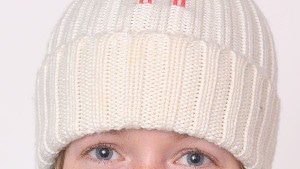Mar 14 2017
If you've hoped to one day wear a warm and cozy connected smart sweater without having to worry about scratching your skin or destroying it in the washing machine, researchers have some good news.
 Researcher Brit Maike Quandt wearing the wearable beanie (Credit: Swiss Federal Laboratories)
Researcher Brit Maike Quandt wearing the wearable beanie (Credit: Swiss Federal Laboratories)
Researchers at Swiss Federal Laboratories for Materials Science and Technology, Dubendorf, debuted a new fiber optic material in the Journal of the Royal Society Interface that can be woven, knitted or embroidered into existing fabrics. The material can be used to create comfortable, flexible wearable sensors that can blend right in to existing clothing. It's even machine washable.
Essential reading: Smart clothing - what are the benefits?
To create the new fiber optic material, researchers melt-spun two polymer-based materials into a fiber optic thread. One of the polymers is a coating while the other is able to transmit light over long distances. Researchers also made sure the thread is also strong enough to meet the strict machine washing standards of hospitals.
Once the fiber optic thread was ready, researchers embroidered it into a fabric. The thread contains both embedded LED lights and a heart rate detector. It also has enough leakage to let light from the LEDs shine onto the skin and bounce back into the detector.
In the study, researchers chose to wove the prototype fiber optic thread into a knit beanie, placing it right along the forehead. After their test subject got her heart rate monitored on the beanie, they compared it to finger-based heart-rate monitoring and found that the results were largely the same.
After accuracy tests checked out, researchers tested comfortability. They put the thread through friction tests, dragging it across replicas of both dry and sweaty skin. According to their results, the sensor had less friction than a standard set of bed sheets.
The study is part of a larger project to develop sensors to better monitor health signs in paraplegic patients, who normally develop sores from traditional sensors. Currently, the sensor can only measure heart rate and is intended for hospitals and their patients, but efforts are underway to create sensors that can track oxygen levels, pressure in tissues and more.
Brit Maike Quandt, an author of the paper and researcher, says the sensors are aimed at providing non-invasive ways of looking at what's happening inside the body without causing additional discomfort to patients.
While the technology is currently aimed at patients and doctors in hospital settings, it won't be too long before clothing makers begin adopting similar technology in their products. The smart clothing market is till in its infancy, and companies like Google and Levi's have only just begin to dip their toe in the water.